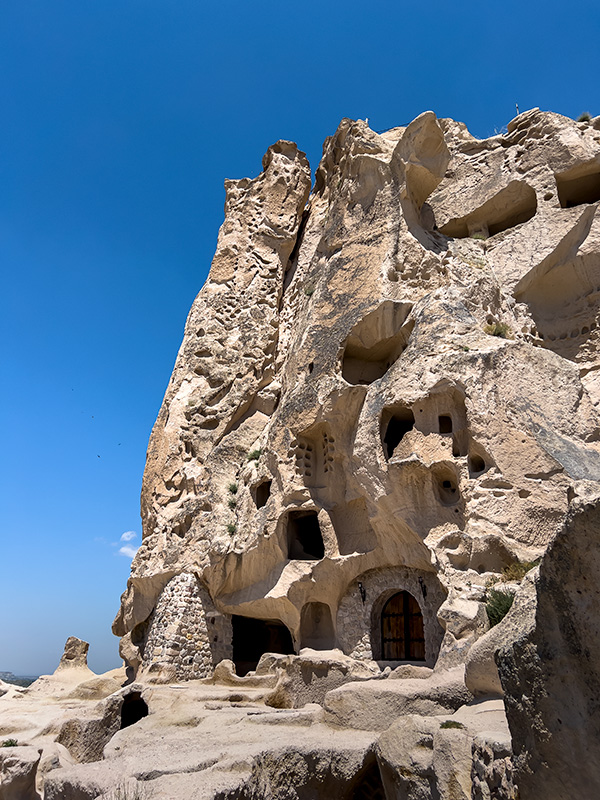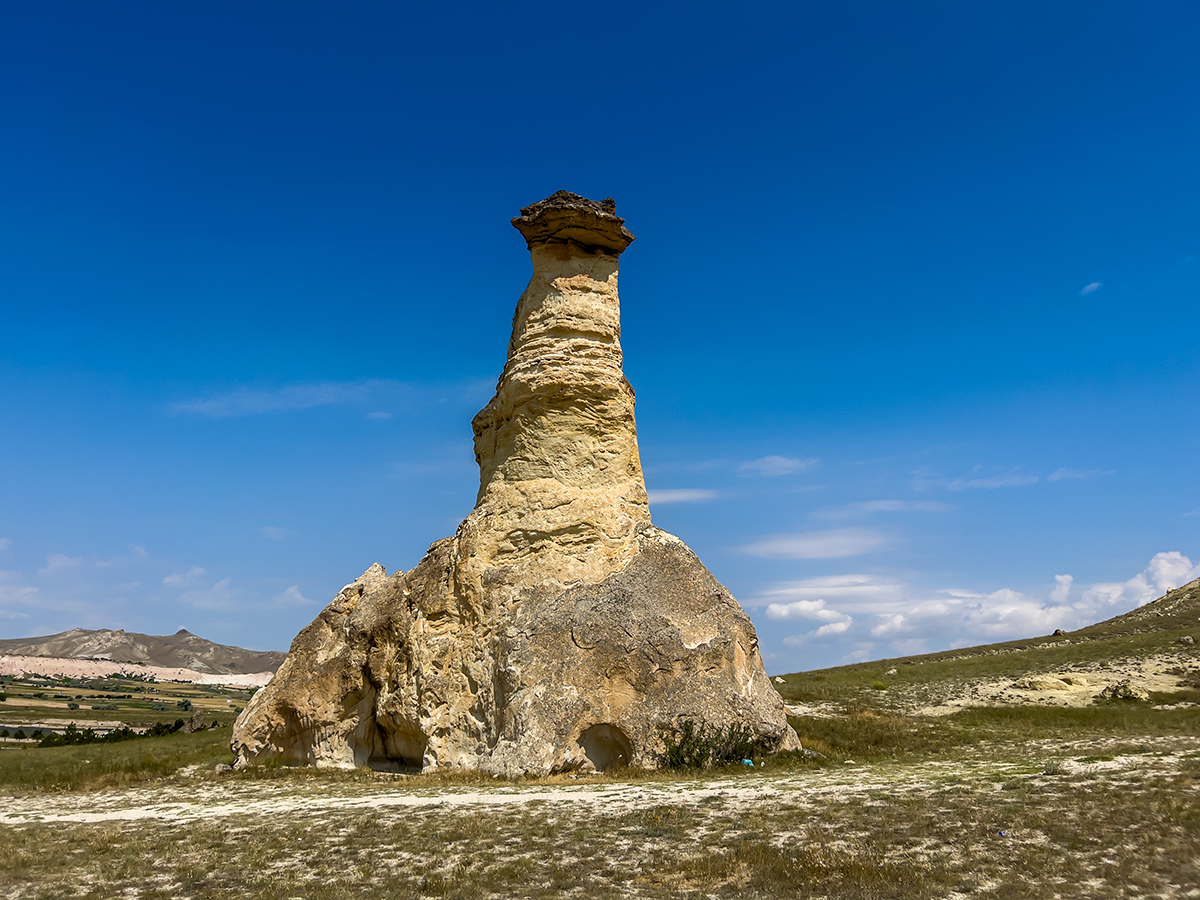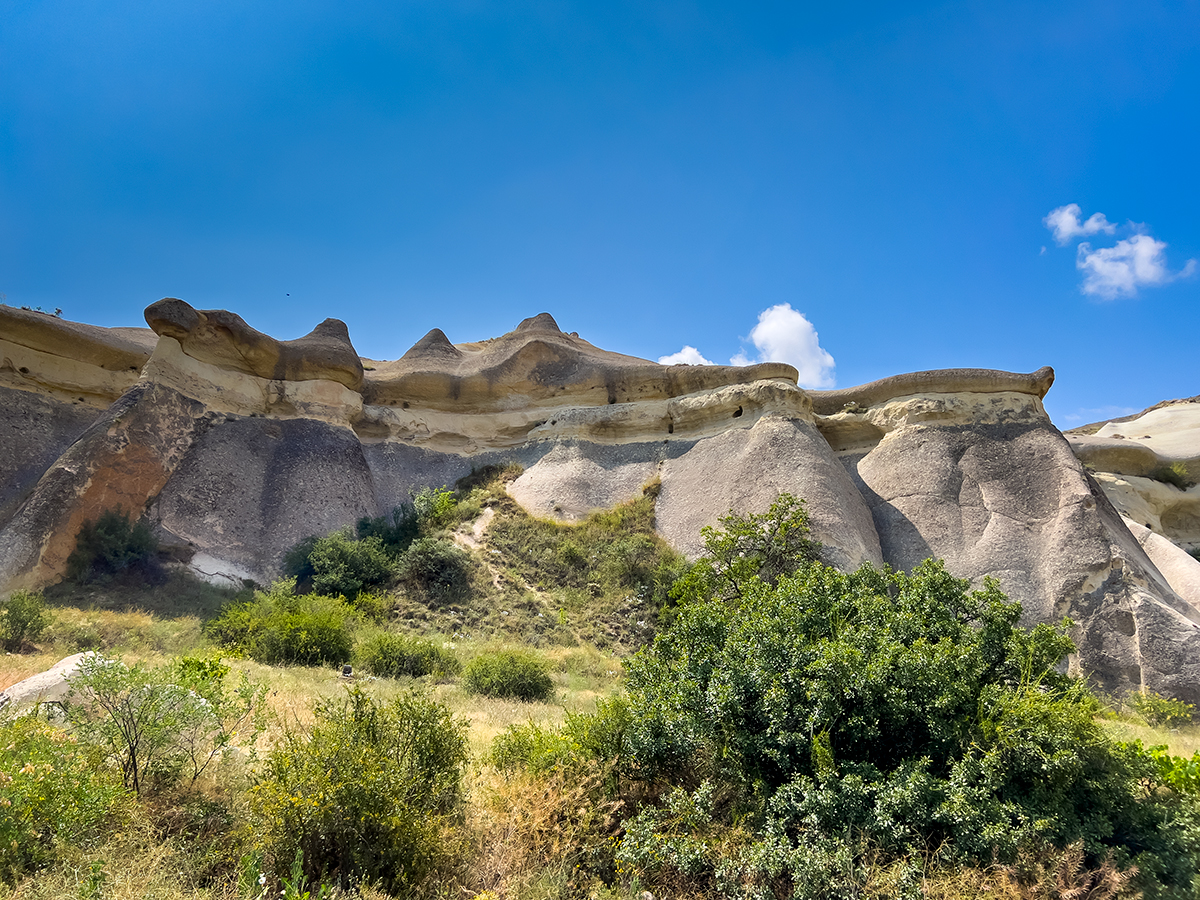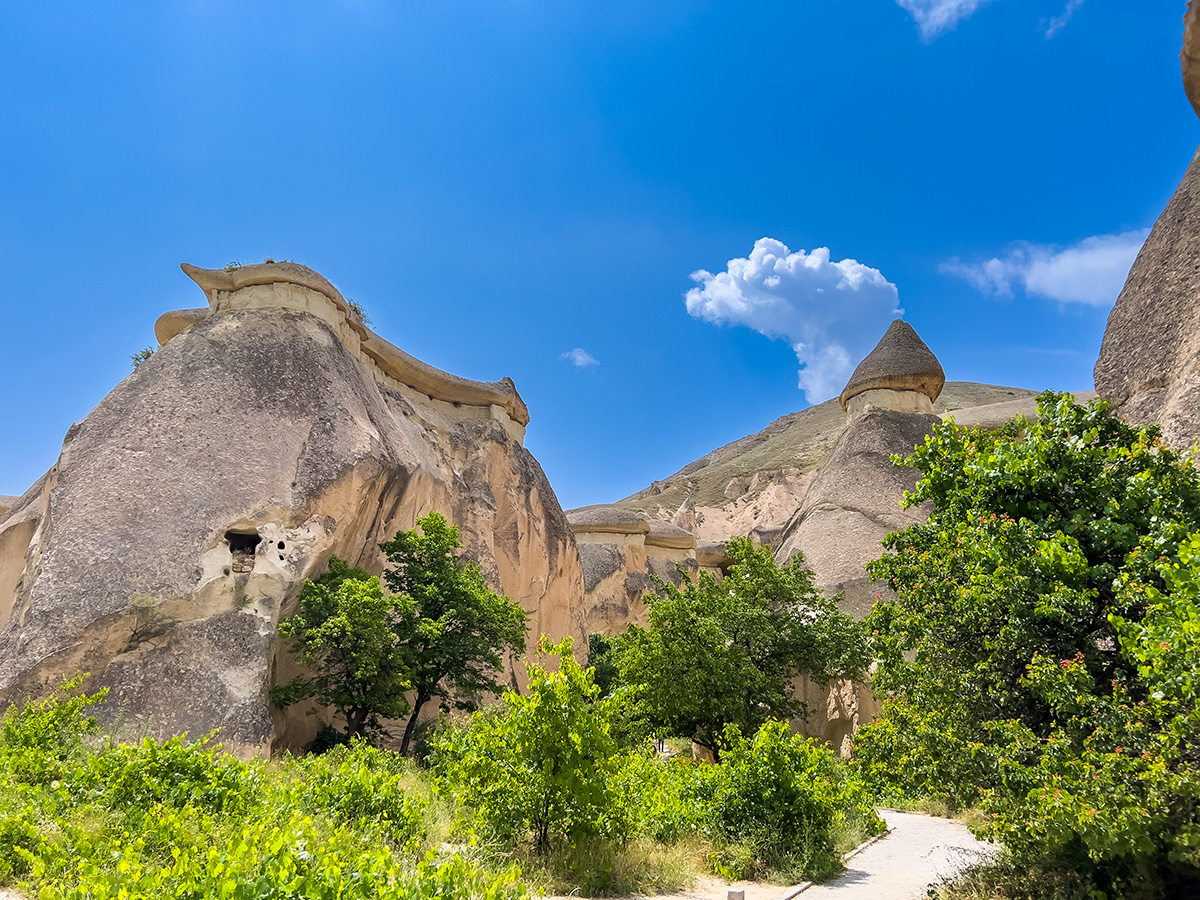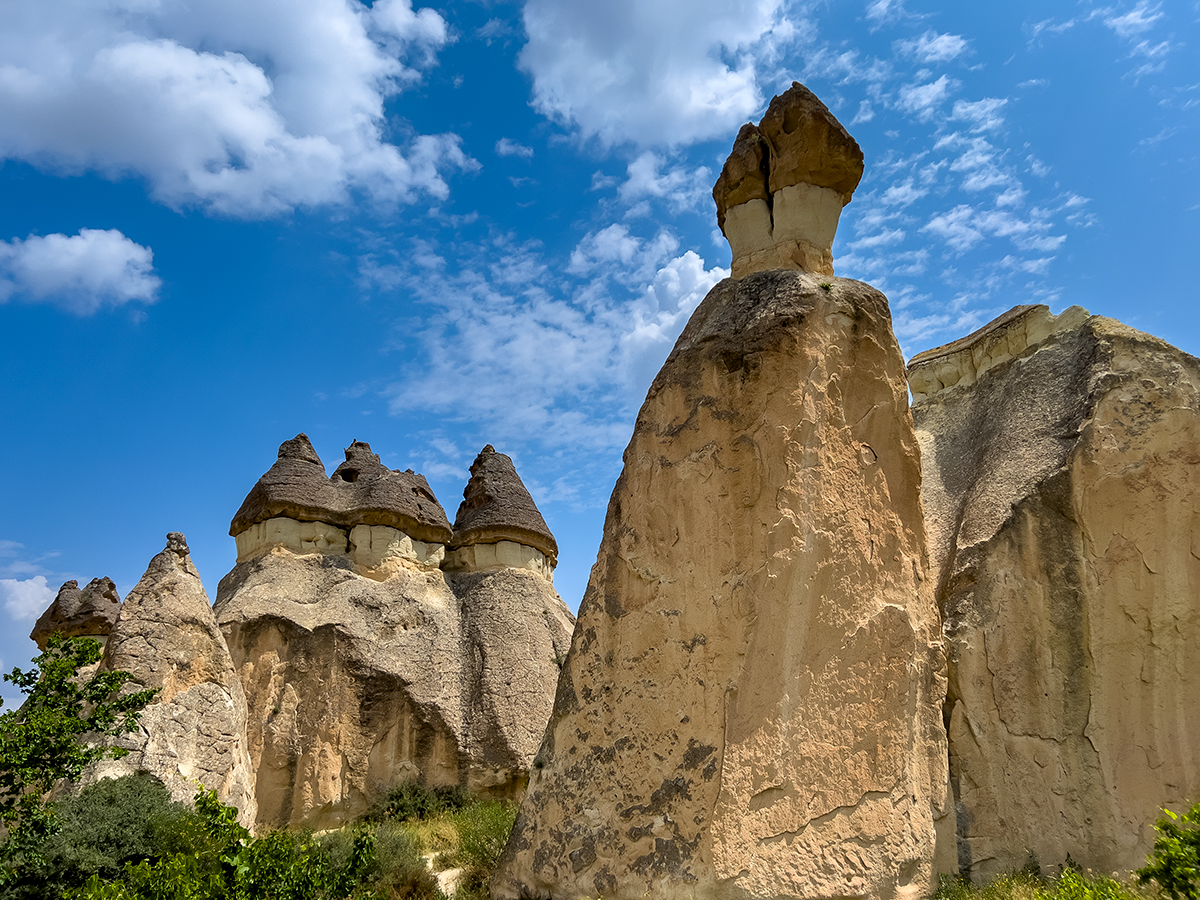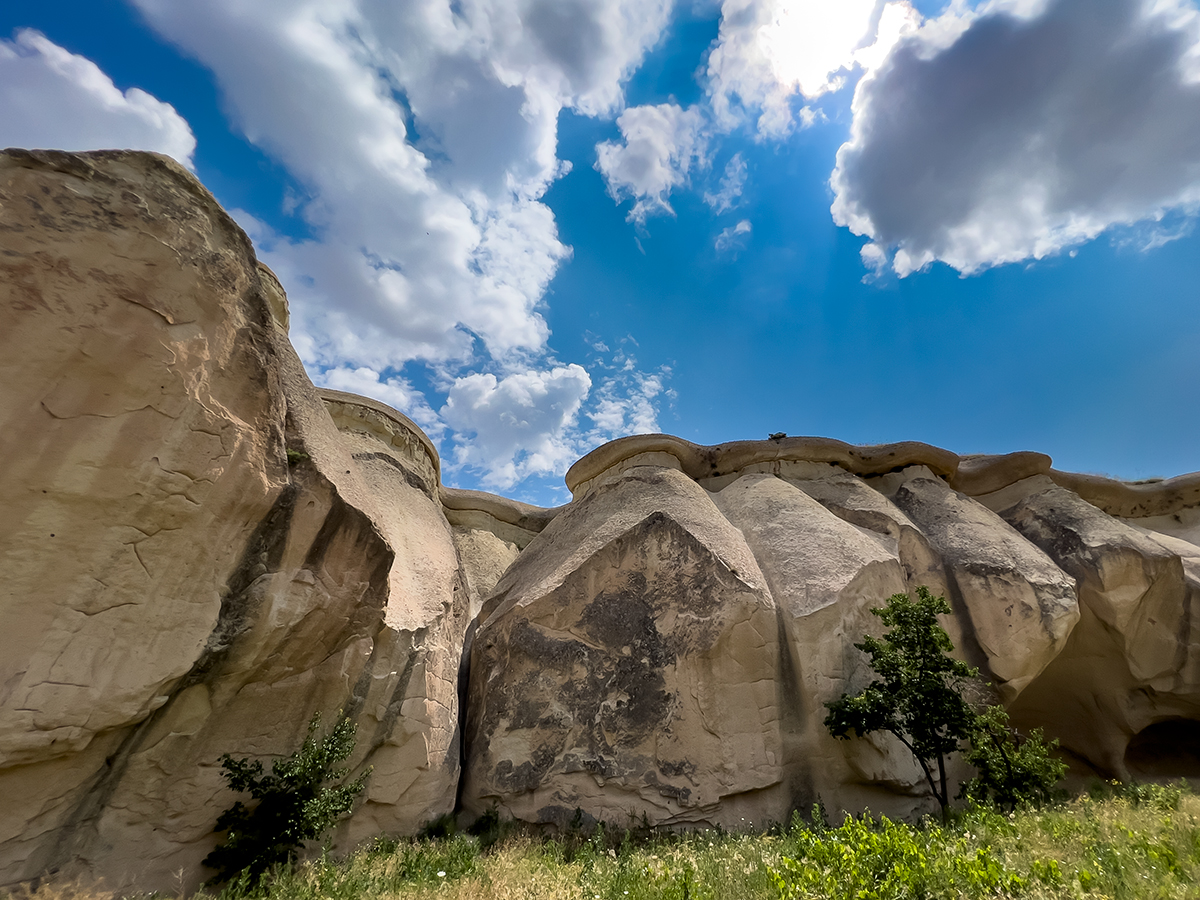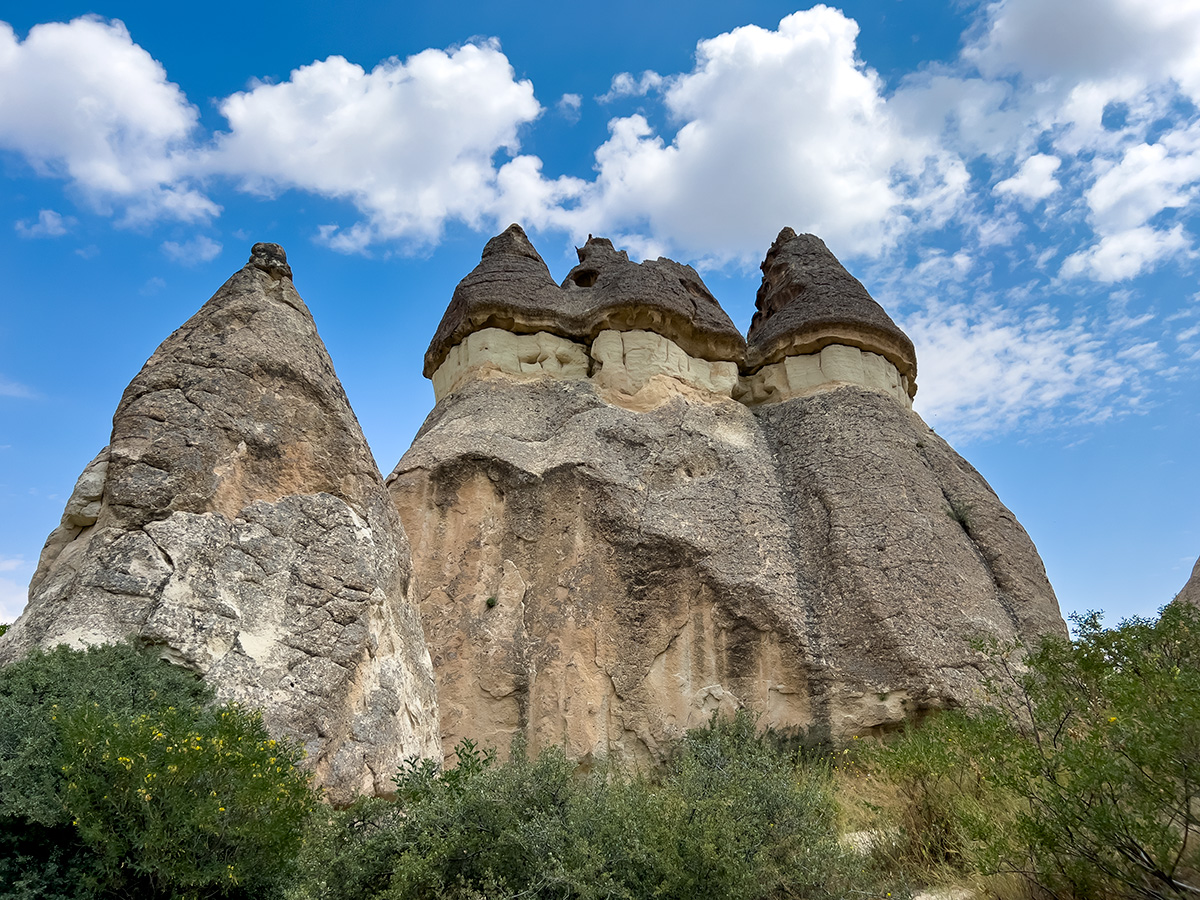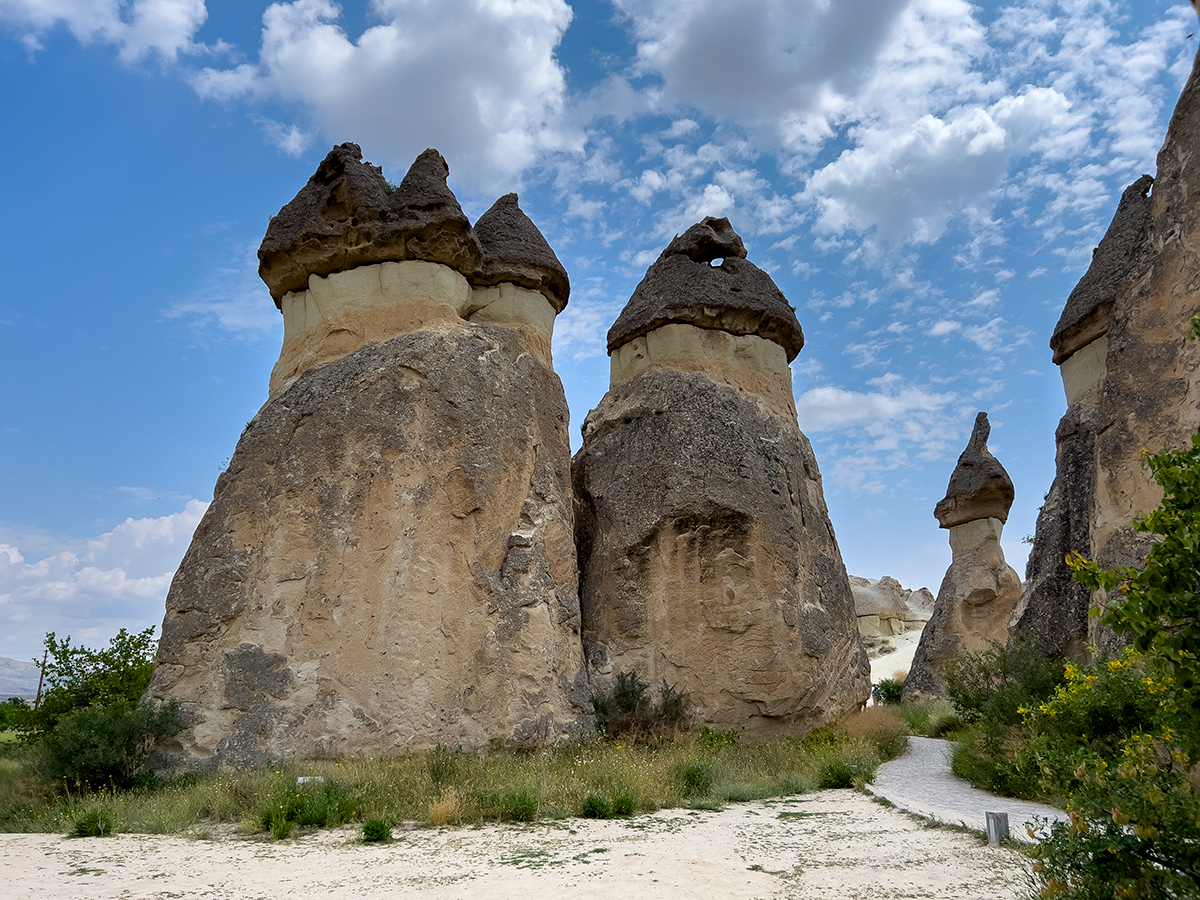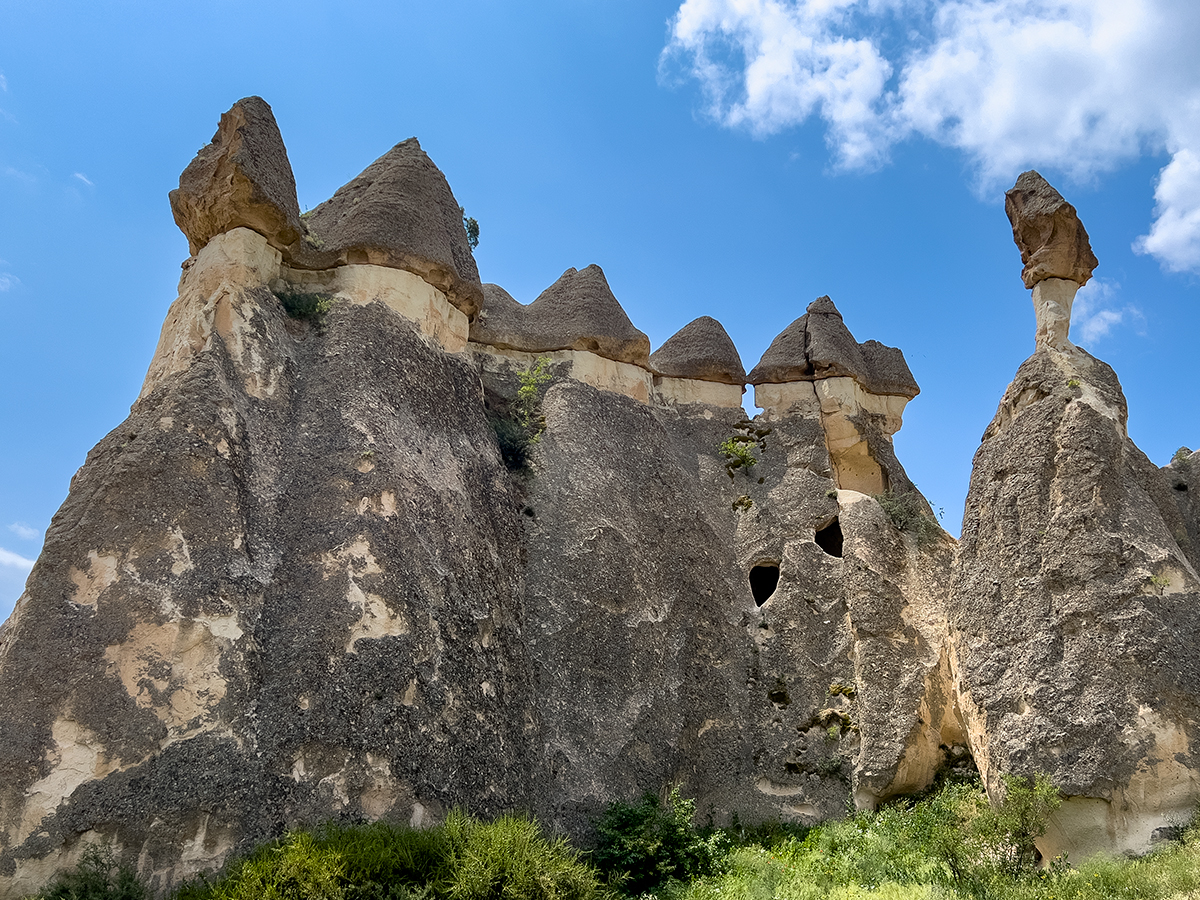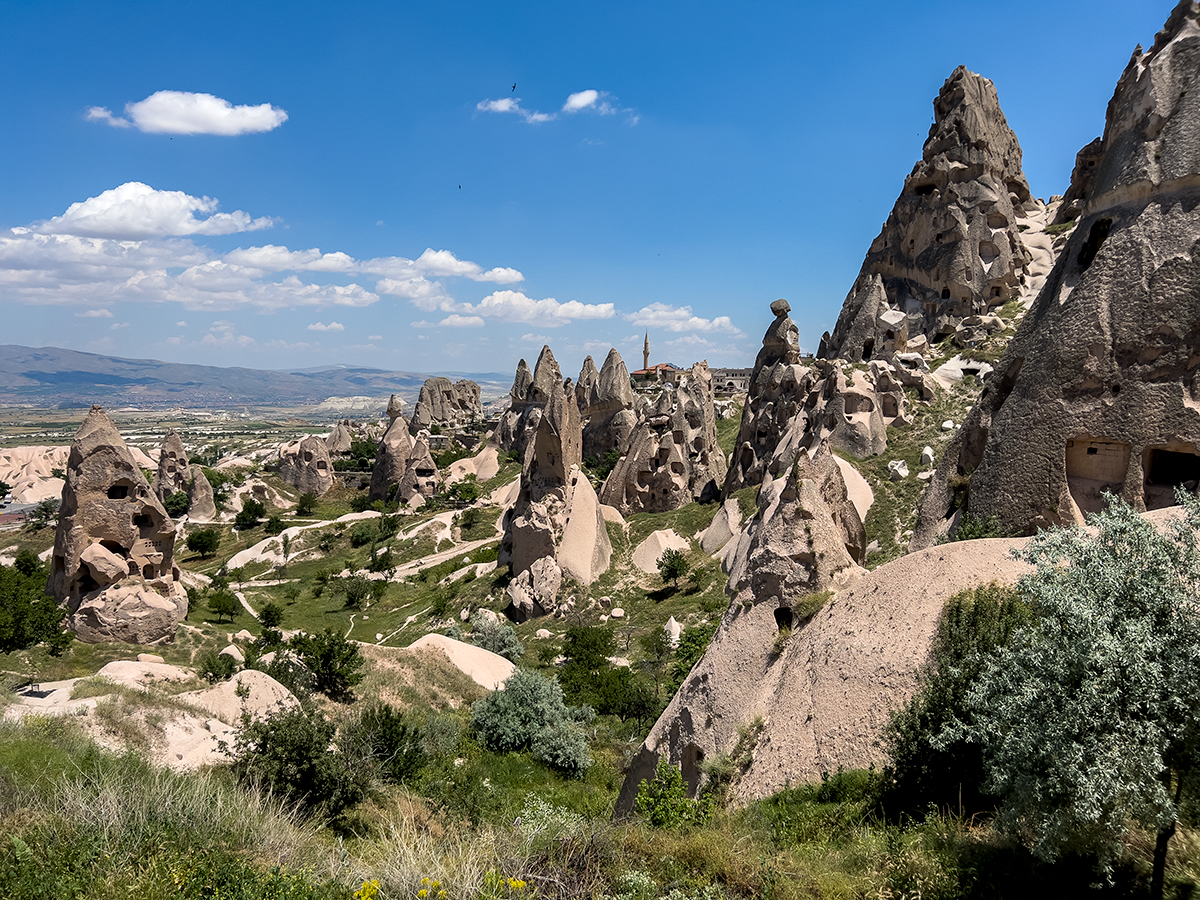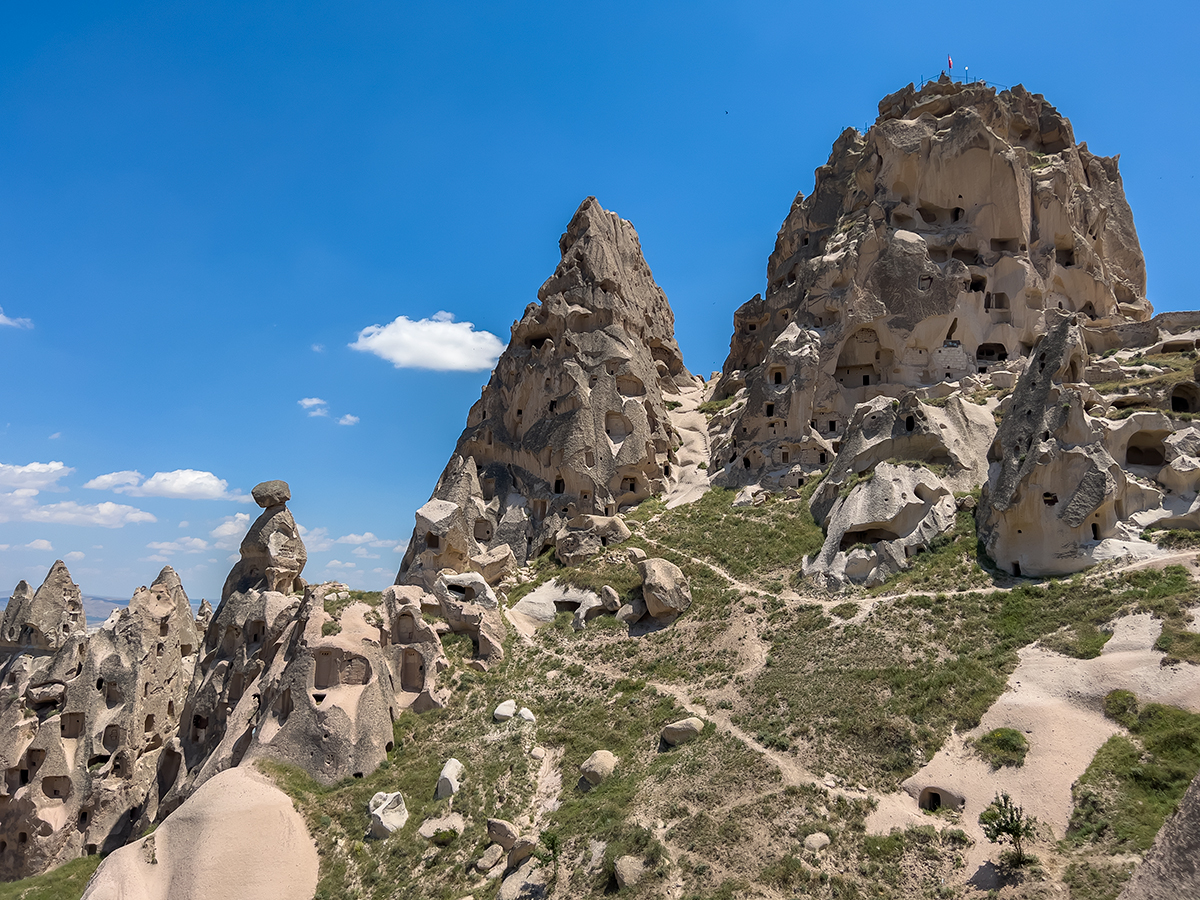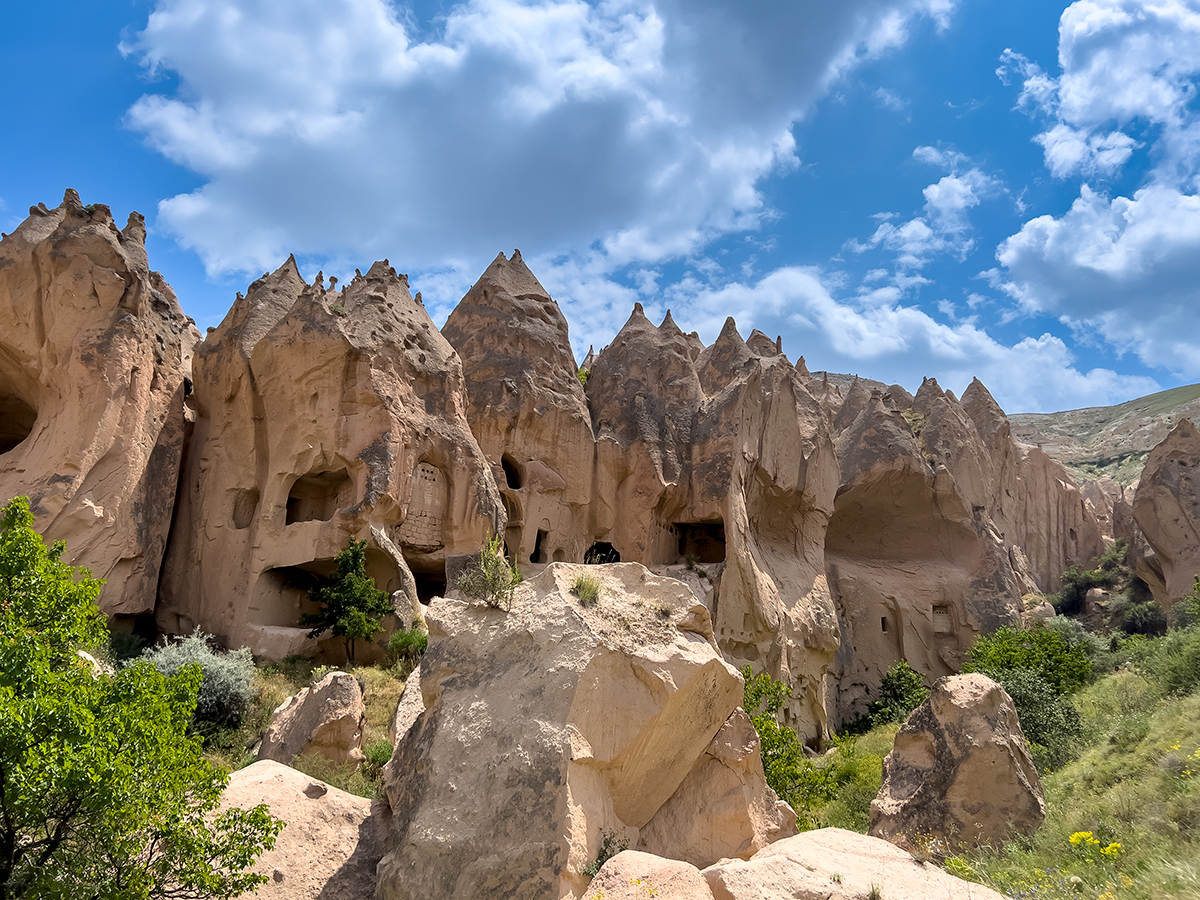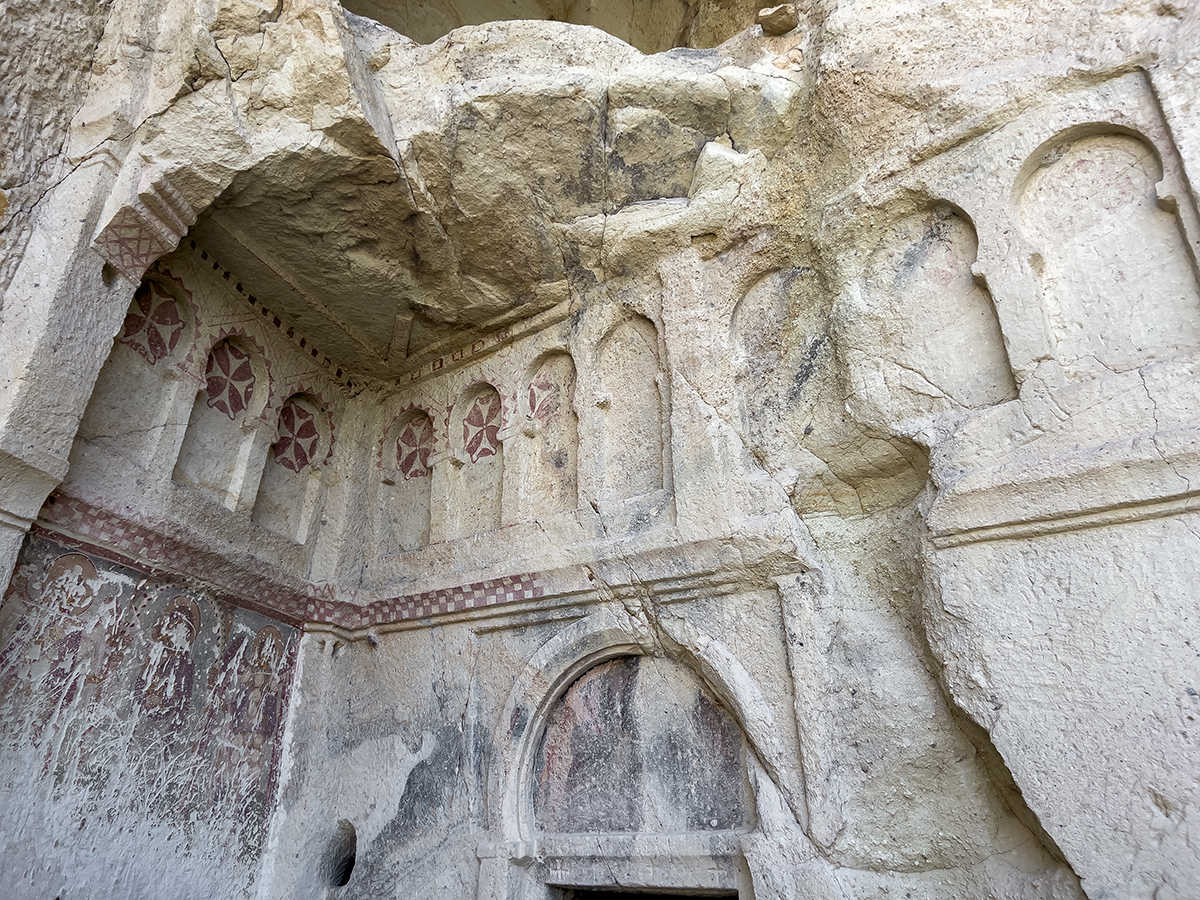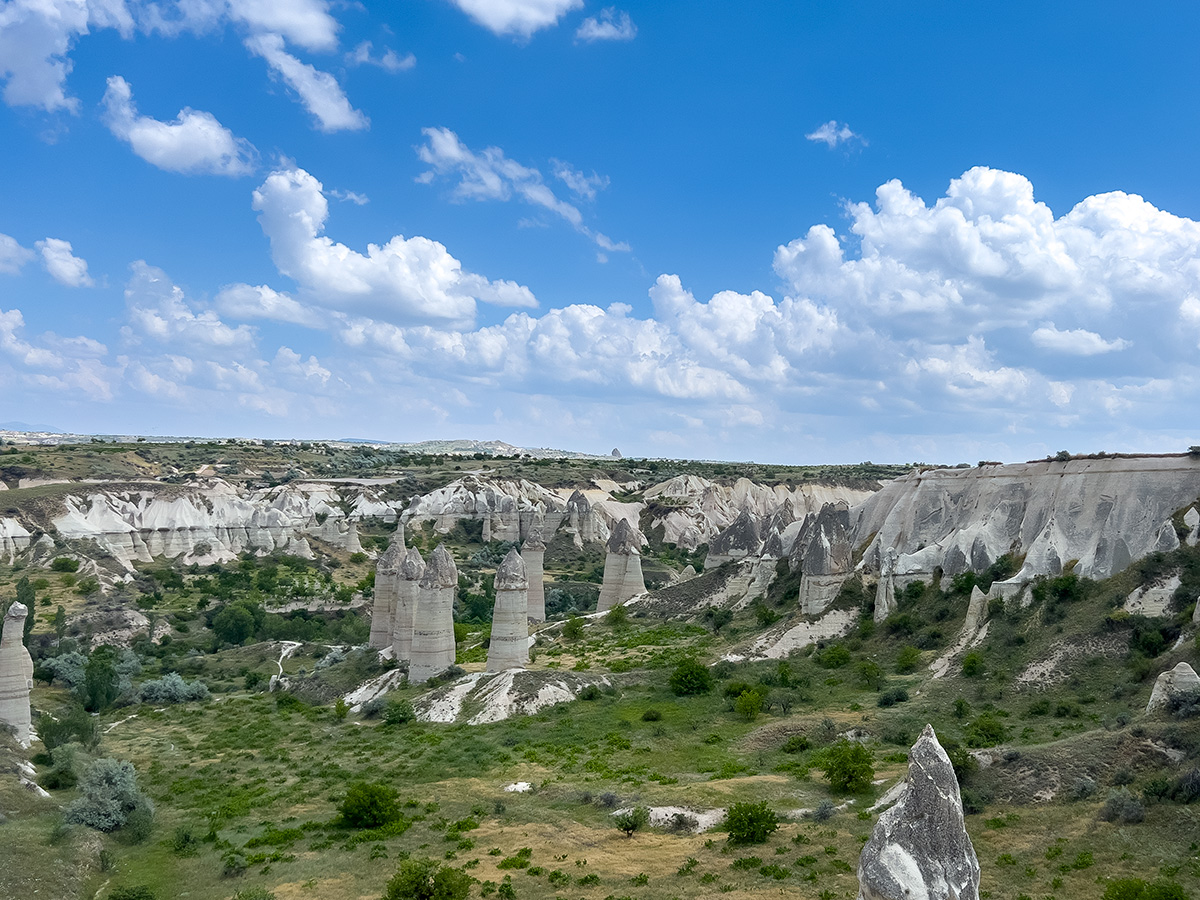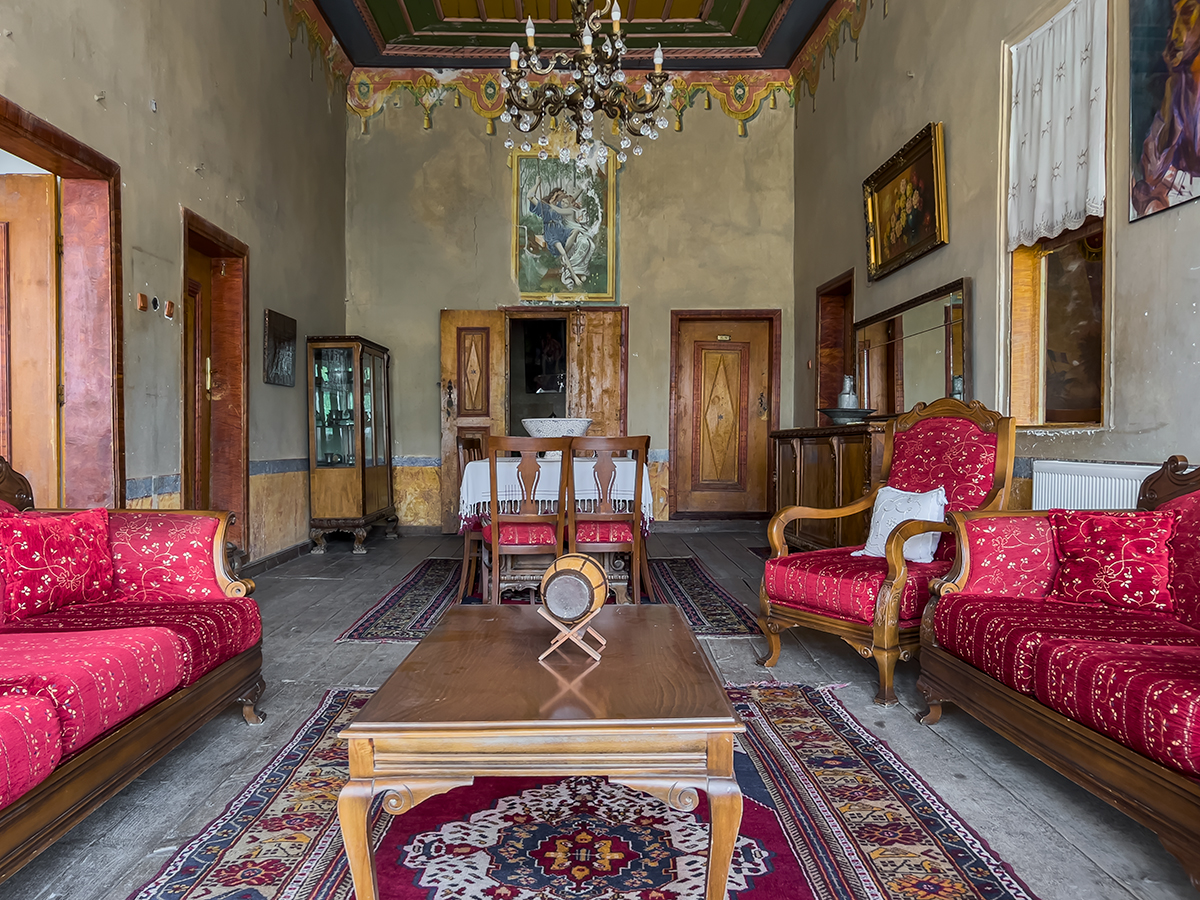Cappadocia is a historical region in Central Anatolia, Turkey. It is largely in the provinces of Nevşehir, Kayseri, Aksaray, Kırşehir, Sivas and Niğde. Cappadocia is a land famous for its distinctive rock formation, historical heritage, and scenic hot air balloon trips. Sitting in Central Anatolia, this historical region attracts crowds of tourists from all over the world.
The earliest record of the name of Cappadocia (Greek: Καππαδοκία) dates from the late sixth century BC, when it appears in the trilingual inscriptions of two early Achaemenid emperors, Darius the Great and Xerxes I, as one of the countries. In these lists of countries, the Old Persian name is Katpatuka.
Cappadocia lies in eastern Anatolia, in the heartland of what is now Turkey. The relief consists of a high plateau over 1000 m in altitude that is pierced by volcanic peaks, with Mount Erciyes (ancient Argaeus) near Kayseri (ancient Caesarea) being the tallest at 3916 m. Cappadocia has a markedly continental climate, with hot dry summers and cold snowy winters.[16] Rainfall is sparse and the region is largely semi-arid.
Nevşehir, was founded in the early 18th century by a grand vizier who was a native of the locality, to serve as regional capital, a role the city continues to assume to this day. In the meantime many former Cappadocians had shifted to a Turkish dialect, and where the Greek language was maintained, it became heavily influenced by the surrounding Turkish. This dialect of Eastern Roman Greek is known as Cappadocian Greek. Following the foundation of Turkey in 1922, those who still identified with this pre-Islamic culture of Cappadocia were required to leave, so this language is now only spoken by a handful of their descendants, most now located in modern Greece.
